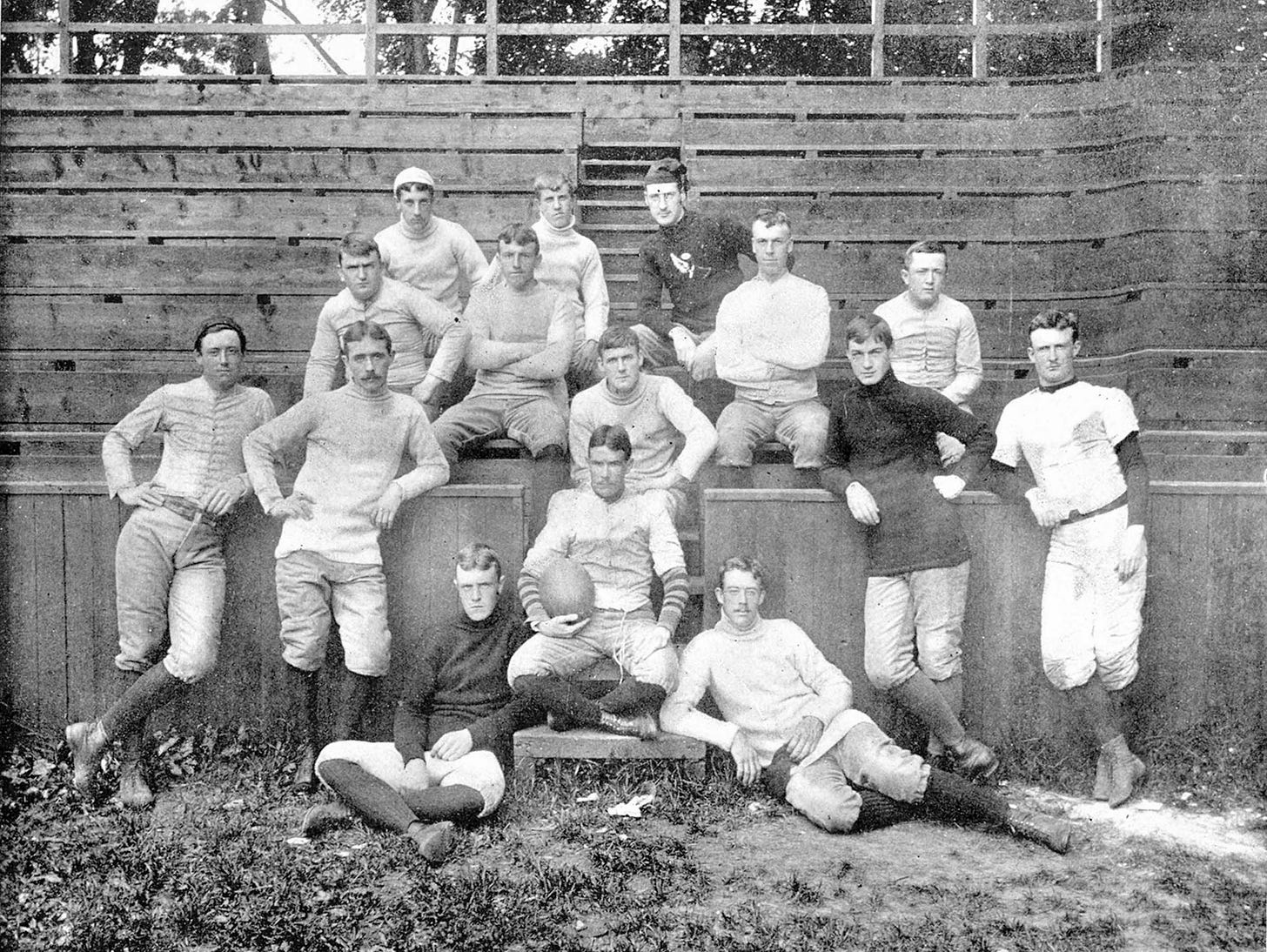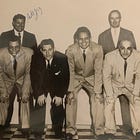Stadium Size, Football Droppers, and Deemphasizers: Fordham
I had planned for this story to be about CCNY, in part because they had one of the coolest old stadiums in the land. However, once I started looking into them, it became apparent that they were never a big-time program, so I turned instead to another New York borough to cover Fordham.
Although the Rams have a solid FCS program today, Fordham is supposed to have the distinction of having dropped football five times. After first playing in 1882, I found only four periods of no football: 1883-1892, 1910-1912, 1943-1945, and 1954-1970. I also could not find newspaper coverage of football at Fordham in 1899 or 1901, but maybe they just kept quiet about the whole thing.
Fordham's early years involved opponents as provincial as you can get in New York City: athletic clubs, high schools, and nearby colleges, though they ventured to Eastern cities to play other Catholic colleges, typically performing well.

They upgraded their schedule to second-tier status in the 1910s and stayed there until the early 1930s. During their second-tier days, they played their home games at Fordham Field, but soon after Frank Kavanaugh became coach in 1927, they moved to the Polo Grounds and Yankee Stadium.
You may or may not be familiar with Frank Kavanaugh, a splendid coach in his day, who is now best remembered for inventing grass drills and the movie The Iron Major. Pat O'Brien played Kavanaugh in the film, just as he had Knute Rockne a few years earlier.
Under Kavanaugh, Fordham began playing higher-end foes at the Polo Grounds and Yankee Stadium, attracting crowds of 30,000 to 80,000, with their game against NYU headlining college football attendance in the city each year.
Jim Crowley took over in 1933, leading Fordham to its greatest heights as their rock-star Seven Blocks of Granite teams led the way to Top 10 rankings, the 1941 Cotton Bowl, and the 1942 Sugar Bowl.
Like many other schools, Fordham suspended football from 1943 through 1945. Following the war, alum Ed Danowski took over. In his nine years at the helm, Danowski took the Rams' record from the bottom to the top and back again, though their strength of schedule did not match that of the pre-war years.
Following the 1950 season and the next few years, Fordham asked local alums to support the team through season ticket purchases and attendance, but they did not. The team's record dropped to 2-5-1 in 1952, 4-5 in 1953, and 1-7-1 in 1954, leading to Danowski's resignation at the end of the season. Among the four candidates cited as possible replacements was alum and New York Giants assistant Vince Lombardi, but two weeks later, the school announced its football days had come to an end. Rev. Laurence J. McGinley, president of the university, identified football's financial losses as the source of the problem, saying:
Friends and alumni like to read about (the football team) in the Sunday papers. The trouble simply is that so few want to watch it on Saturday.
'Fordham Drops Football - For Fifth Time,' Chippewa Herald-Telegram, December 16, 1954.
Things began to change in the late 1960s when Fordham's football team won the 1968 club football national championship. Earlier that year, Fordham hired alum and University of Scranton athletic director Pete Carlesimo as its athletic director. Carlesimo's son, P.J., played club football in 1969, long before coaching Seton Hall and in the NBA.
In 1970, Fordham returned to varsity competition, playing club and small college teams as they regained their footing, allowing P. J. and his brother Bernie to play varsity football. Fordham competed at the Division III level until 1989, when they moved up to Division I-AA, now known as the Football Championship Subdivision (FCS), and joined the Patriot League for football. Playing at 7,000-seat Coffey Field, Fordham has made the FCS national playoff six times since 2002, all while proving that you can bring football back even after dropping it four or five times. You just have to run a program with the right objectives and budget for the school.
Ranking by Stadium Size
Below are the schools reviewed to date, ranked by stadium size. The stadiums' opening and demolition years (if applicable) are also noted.
Wichita State (Cessna Stadium): 31,500 | 1946 - 2022
Catholic (Brookland Stadium): 30,000 | 1924 - 1985
Denver (DU/Hilltop Stadium): 30,000 | 1925 - 1971
Marquette (Marquette Stadium): 24,000 | 1924 - 1977
Xavier (Corcoran Stadium): 15,000 | 1929 - 1988
Gonzaga (Gonzaga Stadium): 12,000 | 1922 - 1949
California State University, Fullerton (Titan Stadium): 10,000 | 1992 - TBD
Boston University (Nickerson Field): 10,000 | 1915 - TBD
Vermont (Centennial Field): 10,000 | 1923 - TBD
Fordham (Fordham Field / Coffey Field): 7,000 | 1920s - TBD
St. Mary's (St. Mary's Stadium) 5,500 | TBD
NYU (Ohio Field): 5,000 (est.) | 1897 - 1947
San Francisco (St. Ignatius Stadium): <5,000 (est.) | c. 1909 - c. 1930
Carnegie-Mellon (Skibo Bowl): 4,500 | 1960 - 1987 | Gesling Stadium: 3,900 | 1990 - TBD
Sewanee (McGee Field): 3,000 | 1891 - TBD
Long Beach State (none): 0 | Not applicable
Schools to Review
UC Santa Barbara | Case Western | Chicago | Creighton | DePaul | Detroit | Drake | Loyola (Chicago) | Pacific | St. Louis | Santa Clara | Tampa | Washington University in St. Louis
Click Support Football Archaeology for options to support this site beyond a free subscription.







Hi Tim. Enjoying this series. For your list of programs yet to be profiled, please note that "California State" Santa Barbara is UC Santa Barbara. Cheers!
🚫👑